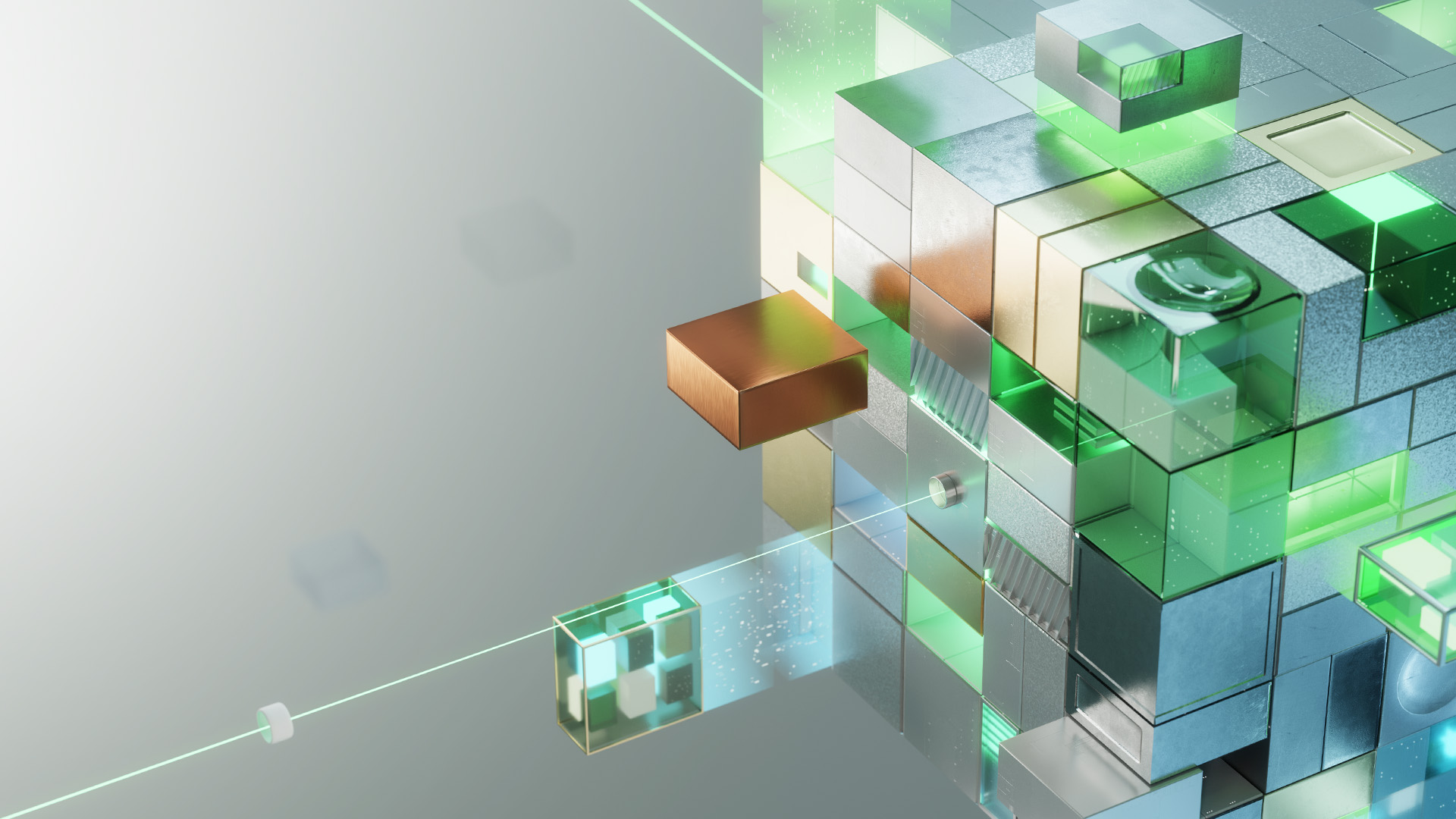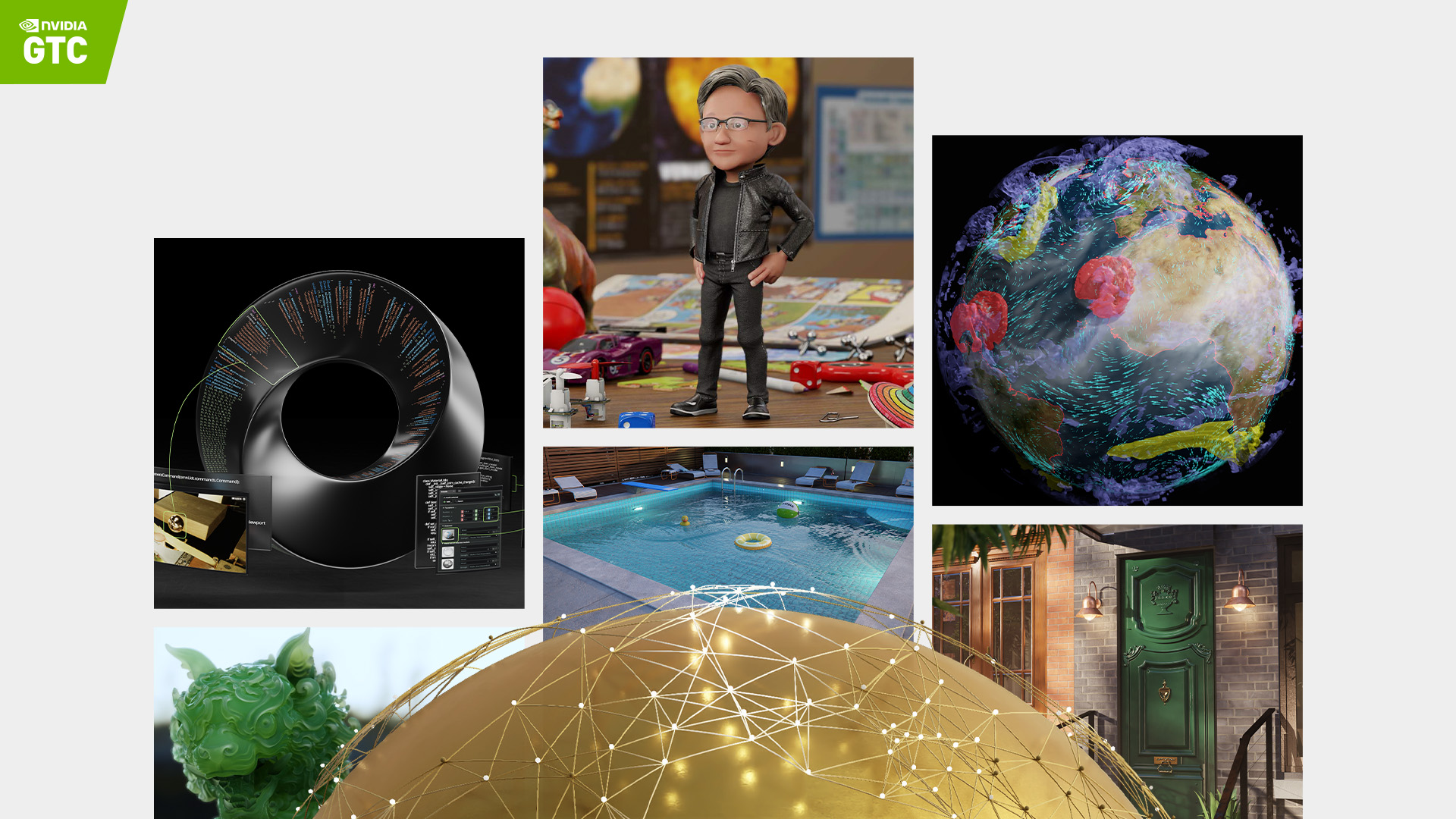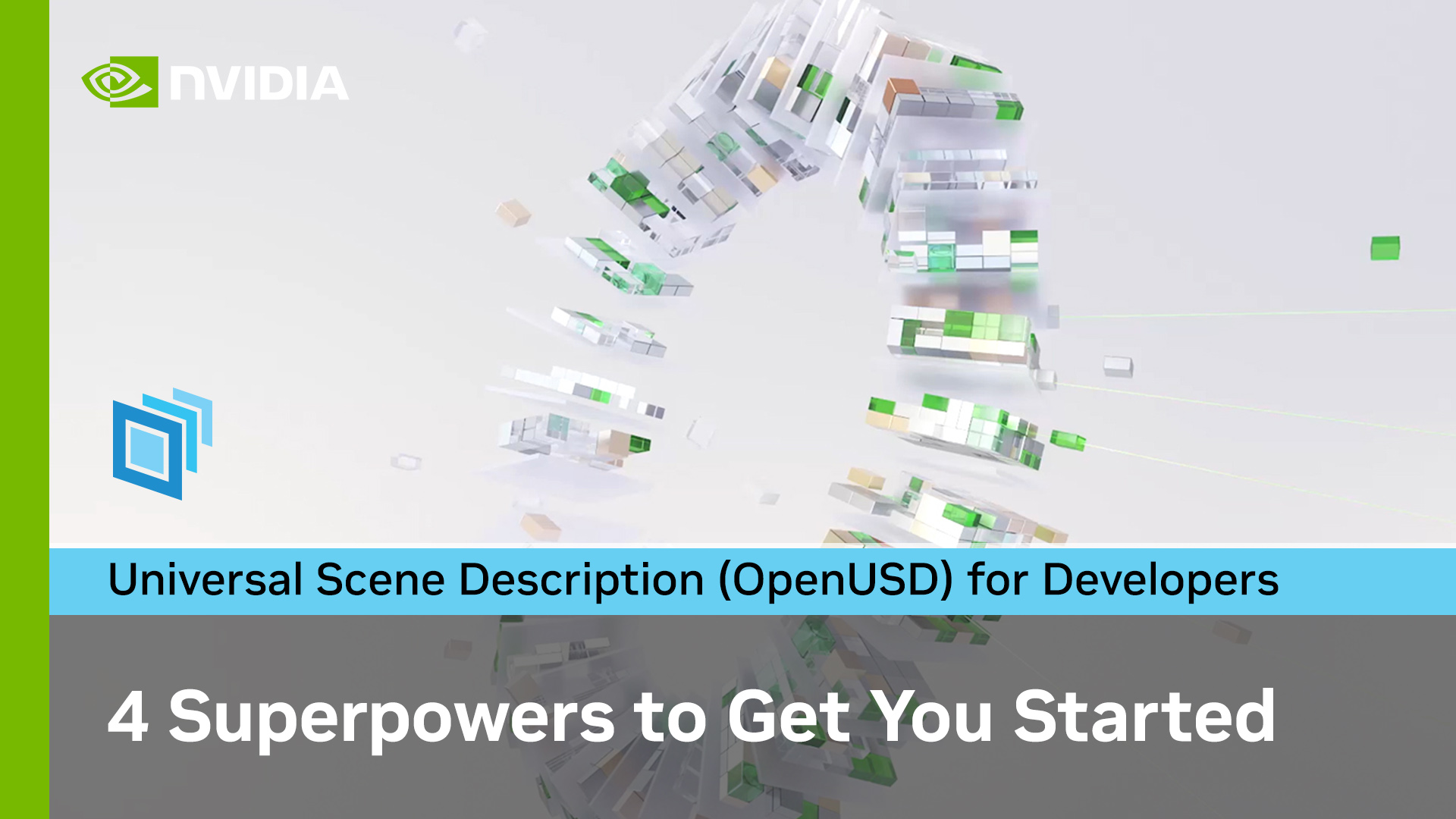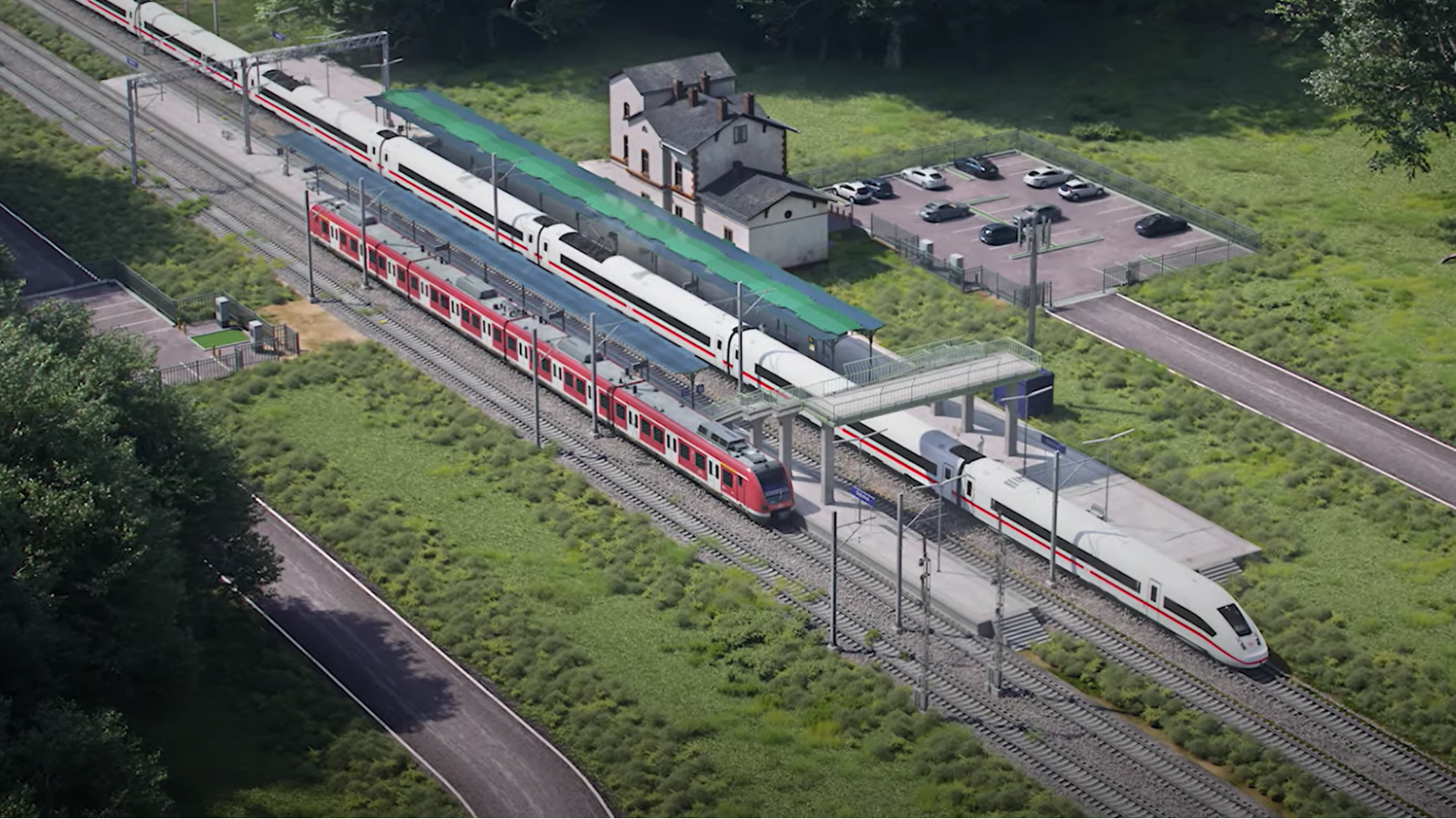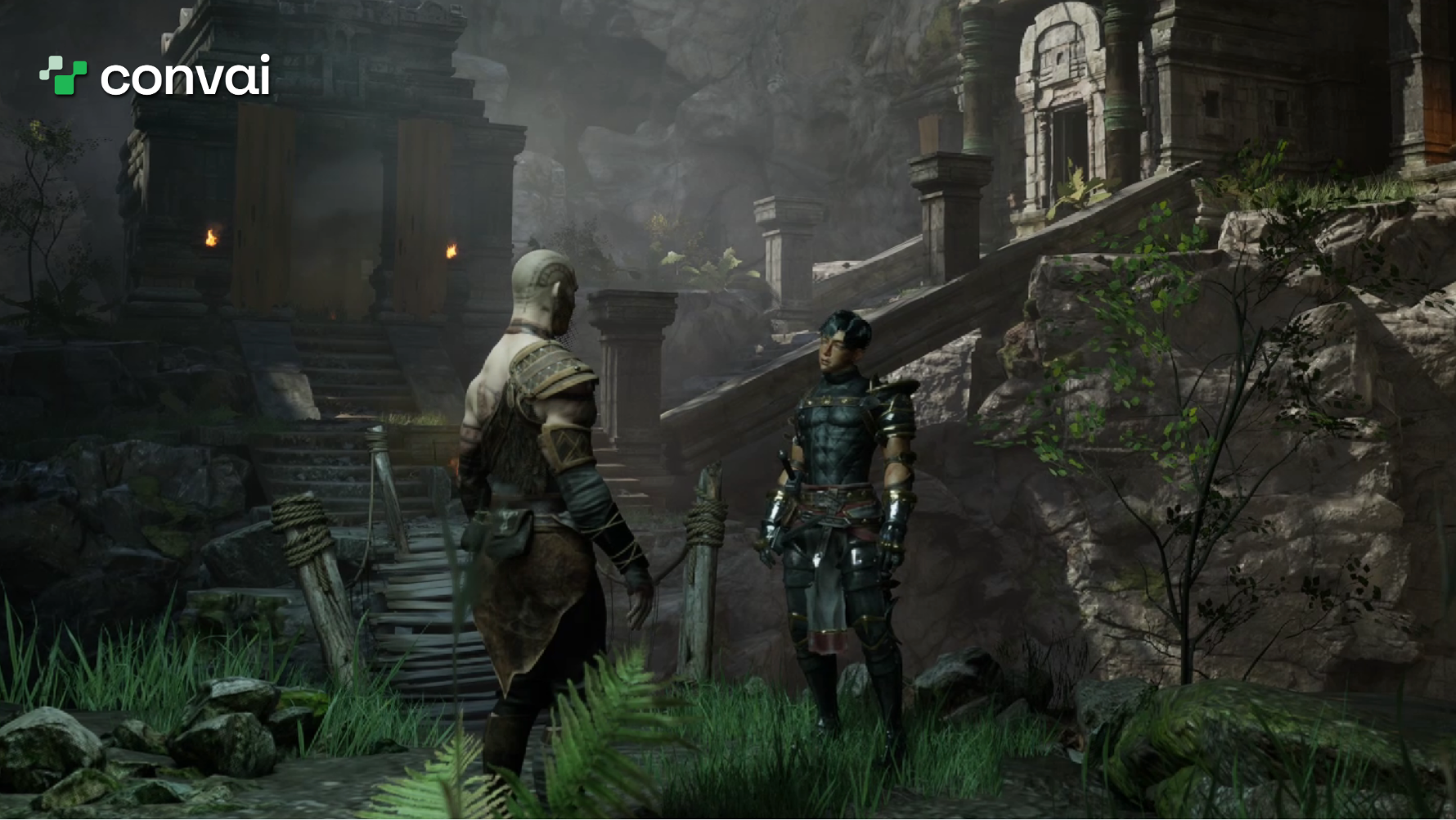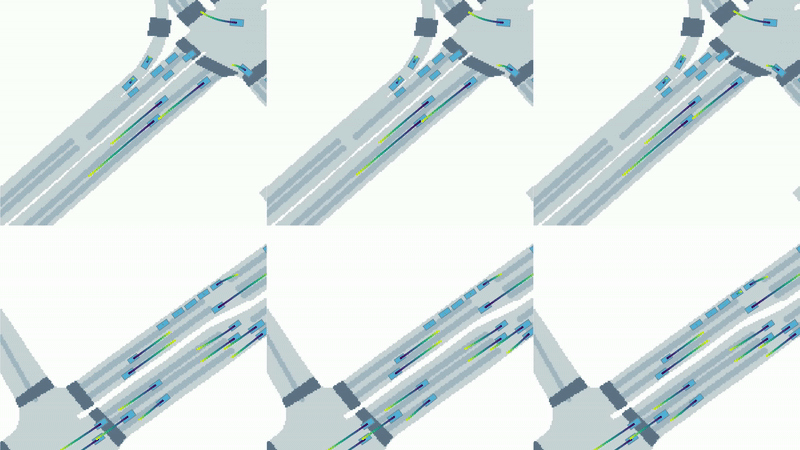The Metaverse is providing new opportunities for everyone—for artists building content across multiple 3D tools, for developers building AI trained in virtual worlds, and for enterprises building digital twin simulations of their industrial processes. NVIDIA Omniverse is a computing platform for building and navigating virtual worlds. Based on Pixar’s Universal Scene Description (USD), Omniverse enables individuals and teams to build custom 3D pipelines and simulate large-scale virtual worlds faster than ever.
NVIDIA Deep Learning Institute (DLI) has launched three new self-paced, hands-on, 90-minute courses for developers and technical artists who build tools to create 3D worlds. In these courses, you will learn how to build advanced tools connected to the Omniverse platform that extend and enhance the 3D tools you already know and love. Click the links below to enroll, and read on for more details.
- Build Beautiful, Custom UI for 3D Tools on NVIDIA Omniverse
- Easily Develop Advanced 3D Layout Tools on NVIDIA Omniverse
- How to Build Custom 3D Scene Manipulator Tools on NVIDIA Omniverse
To learn more about these courses, we caught up with Paul Cutsinger, director of Omniverse Exchange at NVIDIA, whose team designed the courses.
Why did you create these training courses?
People have been building virtual worlds for the entertainment industry for decades, but we are at a time in history that’s especially exciting because everything that is around us, everything that is physically real in the world, is going to first be created digitally. In fact, people talk about digital twins, but really, the physical things are actually the twins of the digital world.
Virtual worlds are essential for the next era of industries. Building virtual worlds is a complex team sport. Making true simulations of the world requires scalable, physically accurate 3D simulations of supply chains, factories, warehouses, physical stores, distribution centers, and so on. Simulating the associated products and processes is an enormous task. And today’s 3D workflows are tedious and way too slow for designers, artists, and engineers.
For the Metaverse and virtual worlds to come about, we need to have tools, lots and lots of tools. Tools built for specific tasks. Tools that are small and easily composable in workflows. These three new DLI courses are the basis for Metaverse tool makers. They provide a foundation for building Omniverse tools.
Tell us a bit about each course.
In the first course, Build Beautiful, Custom UI for 3D Tools on NVIDIA Omniverse, you will learn the basic user interface (UI) elements of Omniverse and use them to build custom interfaces for a typical tool. We will show you how to build a UI that integrates stylistically with Omniverse while being tailored to your use case for a seamless user experience. In addition, you will learn how to use Omniverse Kit to produce extensions.
The second course, Easily Develop Advanced 3D Layout Tools on NVIDIA Omniverse, enables you to modify a scene. You’ll learn how to programmatically work with the USD API to find, create, move, and arrange items in the scene that you’re building. The course provides a good practical, hands-on orientation to USD.
The third course, How to Build Custom 3D Manipulator Tools on NVIDIA Omniverse, teaches you how to build manipulator tools that enable you to add UI affordances directly on objects inside a scene or in the viewport. For example, if I want to resize an object, I can go over to some property panel somewhere, find the scale slider, and move it. But if that task is an integral part of my solution, I can create a widget to manipulate the object directly. So the third course teaches you how to build scene manipulators so artists can more easily create and modify scenes.

Who should take this training?
These courses are for developers, engineers, technical artists, tool-building companies, hobbyists, and researchers who want to develop Python-based tools for the Metaverse.
With Omniverse, I believe, we are going to see a whole new wave of creativity and levels of collaboration we’ve never seen before. But for that to happen, we need more tools to enable content creators. This training is designed for those who want to build tools for digital twins, virtual worlds, and 3D workflows. There is a tremendous opportunity for tool builders right now and Omniverse enables the building of plug-ins in an agnostic way. You won’t have to build the tool for each and every connected app. Just build once and use in Omniverse.
I’d also recommend this training for folks who are transitioning from artist to developer or developer to artist. This is a really great way to grow from one to the other. If you’re an artist, become a technical artist. If you’re a technical person, become a technical artist. Level up your skill set.
What are some examples of the kinds of tools being built?
We launched these courses at SIGGRAPH and held a contest to see what kind of extensions students would come up with. The #ExtendOmniverse contestants could submit entries to one of three categories that aligned with the courses:
- Omni.ui with Omniverse Kit
- Layout and scene authoring tools
- Scene modifier and manipulator tools
The results were phenomenal. We had extensions submitted from developers all over the world. The grand prize went to Yizhou Zhao who built an IndoorKit extension for robotics to reduce the effort required to set up tasks, such as picking up an object. Visit yizhouzhao/VRKitchen2.0-IndoorKit on GitHub for details. With this extension, and the help of Omniverse, it is easier to set up tasks for robots in a photorealistic and physics-reliable manner. You can read more about the Omniverse contest results in the article, To the Metaverse and Beyond: Meet the Omniverse Contest Finalists Building the Tools for 3D Worlds.

What I love the most about Omniverse is the reaction from people who first experience it. To quote Yizhou, “The moment I opened Omniverse, my knowledge and skills in math, physics, computational geometry, 3D design, animation, and deep learning came alive.”
As I mentioned earlier, I’m excited because I think we are unlocking a whole new wave of creativity in the world with Omniverse.
Visit NVIDIA Deep Learning Institute for a complete list of courses and workshops.


